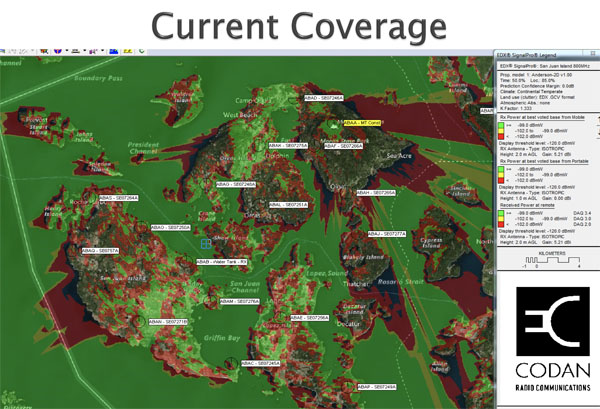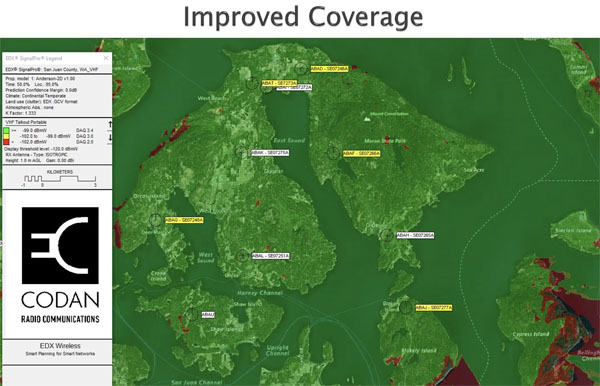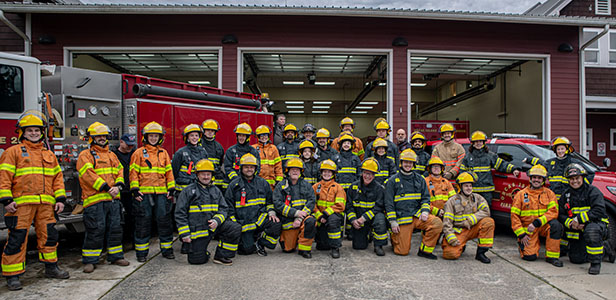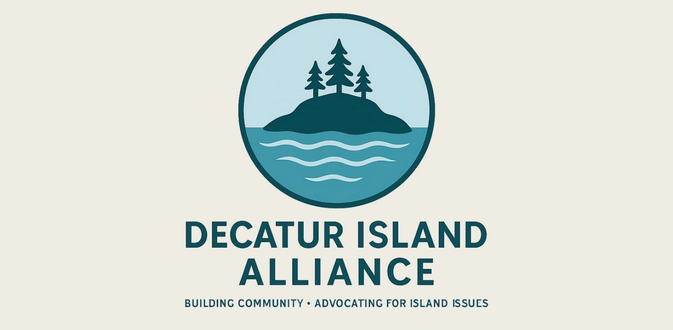— by Susan McBain, Orcas Issues Reporter —
“If you spent $10,000 on Orcas on taxable items, this tax would add $20 to your total.” So said Kimberley Kimple, Public Information Officer for Orcas Fire and Rescue, at the January 31 OIFR information session on Proposition 1, the sales tax measure that voters will decide on at a special February 11 election.

The meeting began with a slide presentation by Fire Chief Scott Williams, giving information on the current emergency communications system in the San Juan Islands, the system to be put in place if the tax is approved, and a variety of technical and cost details. The most dramatic information was the comparison between two maps of emergency communications coverage. The first showed that far less than half of Orcas Island currently has good coverage (areas in green), while in the second, showing expected coverage with the new equipment, more than 95% of the island is green.
The current aging system, built in the 1960s and 1970s, offers no interoperability between different types of equipment, no redundancy, and no automatic monitoring for failures. There are only three transmitter sites in San Juan County, one on Mt. Constitution and two on San Juan. In the event of a major power outage, emergency communications could virtually cease.

The need for improvements has been discussed for more than a decade, but only recently did all the agencies involved—law enforcement, fire, EMS, and public works—complete the work to bring a concrete proposal before the County Council. Equipment from CODAN, a Canadian telecommunications company, will be mounted on OPALCO poles, effectively increasing the number of transmission sites in the County to 20.
Each site has a generator that lets the equipment at that site operate for at least three days. So a lack of power from the mainland will not shut down emergency communications.
After the presentation, community members asked a number of questions:
Why a sales tax rather than a property tax?
- Washington has a specific sales tax for improving emergency communications. The tax for the $2.8 million capital costs of the system will end in five years when those costs are paid, rather than being rolled into ongoing property taxes. The tax for maintenance costs of about $120,000 per year will continue, but the rate will be only 0.05%, or 5 cents on a $100 taxable purchase.
- The number of emergency calls rises substantially in the tourist season. Tourists don’t pay property taxes, but they do pay sales taxes.
- Local emergency service providers serve all the San Juan Islands, but some islands have no private properties on them and so would provide no taxes for services.
Why was CODAN selected to provide the equipment?
- The decision was based on extensive research into costs, performance, and support of various technologies. CODAN equipment was judged to have the best combination of those factors. It allows the existing technologies in the County to work together and to be integrated with new technologies, it is upgradable, and its equipment is affordable.
- The County was able to use a process through the National Association of State Procurement Officials to satisfy state selection requirements.
Why was a special election needed, with its attendant costs?
- There is increasing competition by cellular companies for available communications infrastructure such as OPALCO’s network, and once the County Council agreed to the tax measure, council members felt the measure should be put to a vote as soon as possible.
More details on the system can be found in a January 24 article from OIFR.
**If you are reading theOrcasonian for free, thank your fellow islanders. If you would like to support theOrcasonian CLICK HERE to set your modestly-priced, voluntary subscription. Otherwise, no worries; we’re happy to share with you.**







